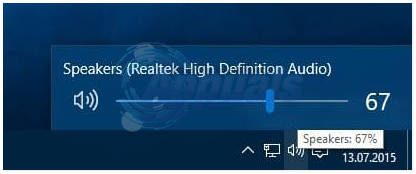In order to perform the steps listed below, you must be logged in as the administrator. Hold the Windows Key and Press R. Type regedit in the run dialog and click OK. Type regedit in the Run dialog box and press Enter. Windows registry editor will open. Navigate to the following registry key. If MTCUVC does not exists, right click CurrentVersion and select New -> Key and name it as MTCUVC Click the DWORD (32-bit) Value named EnableMtcUvc and change its value data. If it doesn’t exists, right click MTCUVC and choose New -> DWORD (32-bit) Value -> Name it as EnableMtcUvc and set it’s value to 0. 0 = Enabled Old Volume Control 1 = Enable New Volume Control (Default) Once done, reboot your PC and test to see if the volume control is back. Click the sound icon on the lower right corner to check/test.
Many users asked for a way to open Volume Mixer through a shortcut. Although you can open the Volume Mixer by right-clicking on the volume icon in the system tray and then clicking Open Volume Mixer, it is handy to have a shortcut if you use this feature often. To create this shortcut, follow these steps. Right-click on the Windows desktop, point to New, and click New Shortcut to create a new shortcut. Create Shortcut dialog box will appear prompting you to type the location of the item. Copy and paste the following code. Click Next and type any name for the shortcut. Click Finish. Note: This shortcut will open the volume mixer in the bottom right corner of the screen. If you prefer the volume mixer to appear in the bottom left corner, follow the same procedure but copy and paste the following code in the shortcut location prompt. In Windows 7 and above, you can open the Volume mixer and pin it to the taskbar as well.
How to Bring Back Old Power Indicator in Windows 10AMD May Bring Back The Old ‘XTX’ Branding, Flagship RDNA3 GPU Renamed to ‘RX…How to Bring Back Internet Explorer on Windows 10How to Bring Back the Language Bar on Windows 10
